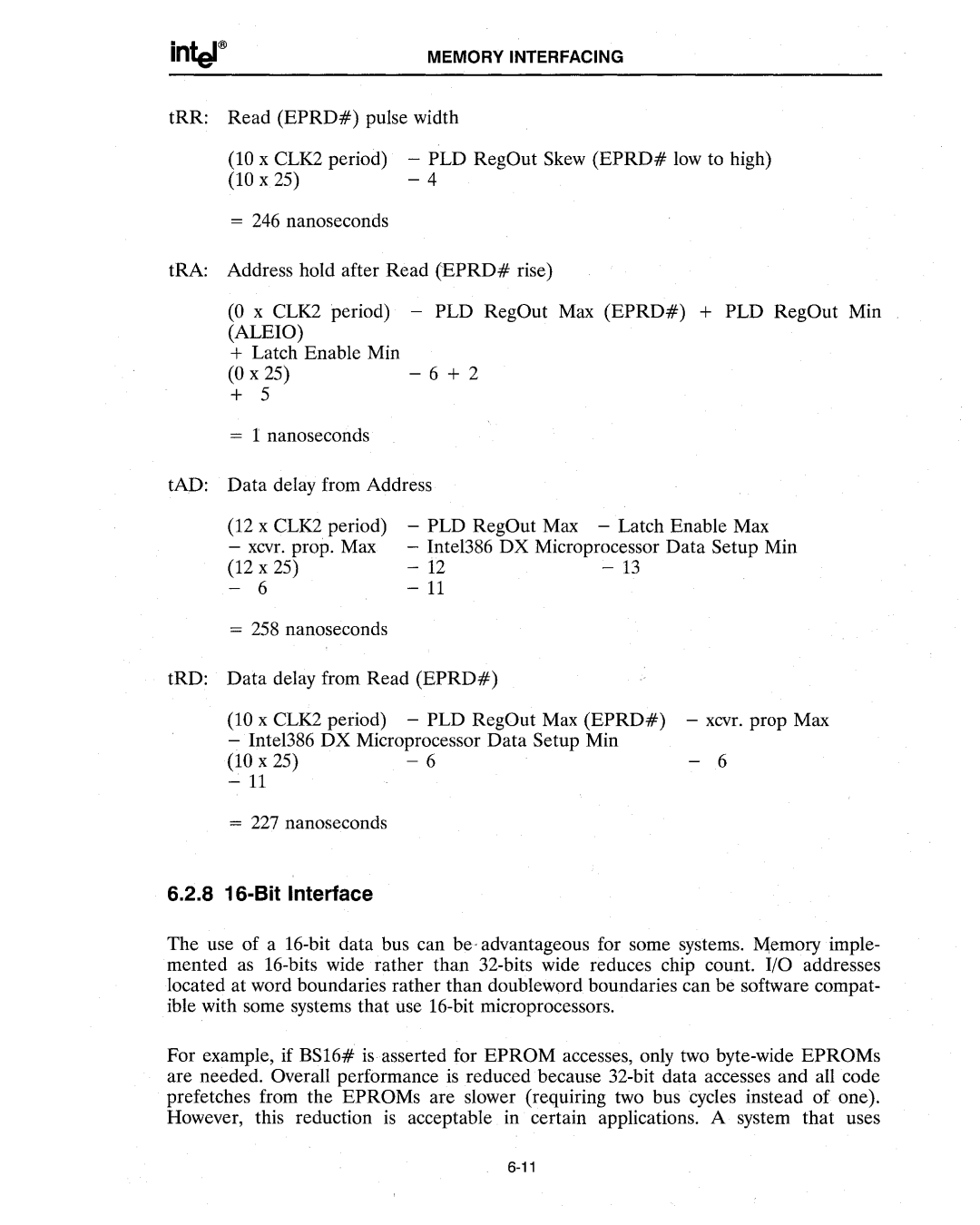
|
| MEMORY INTERFACING |
tRR: Read (EPRD#) pulse width | ||
(10 x CLK2 period) | - | PLD RegOut Skew (EPRD# low to high) |
(10 x 25) | - | 4 |
=246 nanoseconds
tRA: Address hold after Read (EPRD# rise)
(0 x CLK2 period) - PLD RegOut Max (EPRD#) + PLD RegOut Min (ALEIO)
+Latch Enable Min
(0 x 25)- 6 + 2
+ 5
1 nanoseconds
tAD: Data delay from Address
(12 x CLK2 period) - PLD RegOut Max - Latch Enable Max
- | xcvr. prop. Max | - | Intel386 DX Microprocessor Data Setup Min | |
(12 x 25) | - | 12 | - 13 | |
- | 6 |
| ||
=258 nanoseconds
tRD: Data delay from Read (EPRD#)
(10 x CLK2 period) | - | PLD RegOut Max (EPRD#) | - | xcvr. prop Max |
- Intel386 DX Microprocessor Data Setup Min |
|
| ||
(10 x 25) | - | 6 | - | 6 |
=227 nanoseconds
6.2.816-Bit Interface
The use of a
For example, if BS16# is asserted for EPROM accesses, only two
